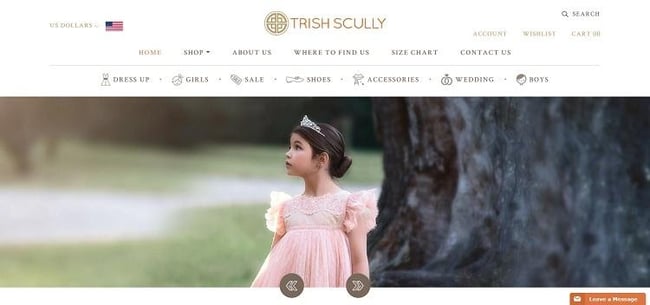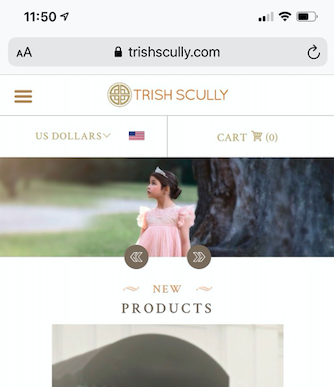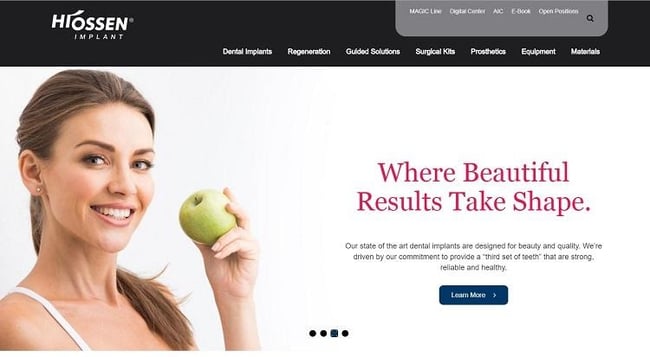Why is redesigning your website so important?
Trends change frequently. If you aren't updating your business to consumer (B2C) website at least a couple times a year, its aesthetics and features quickly become outdated.
Redesigning doesn't always mean you have to give the entire site an overhaul. Sometimes you only need to revamp an element or two.
Adobe surveyed 12,000 consumers worldwide to find out what kind of digital content works. Respondents pointed to the importance of responsiveness and personalization.
About 54 percent said they were satisfied when the design appealed to them aesthetically. Even more critical, users indicated they wanted a design differentiating the site from competitors and preferred companies that remained authentic in doing so.
You know your customers better than anyone else. Internal data already shows you their preferences. Develop buyer personas from the information you have, and recreate your site or webpages based on user inclinations.
Here's how to do it.
How to Redesign Your B2C Website
Keeping your B2C site looking good while delivering a positive user experience is essential to stay competitive in your industry. Adopt these six tips during your B2C website redesign.
1. Embrace Multiple Device Design.
If you haven't yet embraced responsive design, you're missing out on a significant portion of potential traffic. Statista reports that 98.2 percent of Facebook users access the social media site via mobile phone. Only 20 percent use the site through both phones and computers.
While your desktop design is still relevant, mobile is the wave of the future. If you make only one change to your site this year, focus on making sure all the features work well on mobile devices.
Trish Scully offers similar experiences on both desktop and mobile screens. The beautiful photography is still located at the top of the page, although it becomes smaller for smartphone users.

The menu changes to a hamburger format for mobile. Offering similar experiences across all platforms creates consistency.

2. Keep Up With the Trends.
Trends change almost constantly. While you don't want to chase after fads, you should be aware of what's popular and why.
Your industry may determine how often you should update your site. If you sell women's clothing, then cutting-edge fashions and trends become more important than if you run a personal finance site.
Watch your competitors' websites and see if they add any new features. Changing your logo may have minimal impact, but adding the ability to order with a single tap on a cell phone screen adds a lot of usability for customers.
3. Add Case Studies.
Case studies help potential clients see the possibilities. Present these as testimonials or in-depth research documents about the benefits of doing business with you.
What are the main reasons why people come to you for help? Look for opportunities to show how you can solve the same problem you fixed for someone else. Before and after photographs are an excellent way to highlight the changes.
Hiossen features an image of a woman with a gorgeous smile. Her holding an apple indicates she can now eat anything she wants without fear. Showing what the user can eat answers a question many may have about dental implants.

The call to action (CTA) invites site visitors to learn more. Additional landing pages provide users with the information they need to make an informed decision.
4. Improve Conversions.
Another reason to change your site is to improve your conversion rates. The average conversion rate for ecommerce sites is around 2.86 percent, but this varies based on industry and location. If your conversion rates fall below industry standards, it's time to tweak your site and improve results.
Use heatmaps to see what portions of the page users click on. Remove anything they ignore. Look for ways to move buyers through the sales funnel more efficiently. Know the different layers of the journey, and speak to users' needs each step of the way.
For example, if the site visitor is in the awareness stage, educate and inform. If they are in the decision stage, push the CTAs and try to move them through to the shopping cart.
5. Fix Navigation Issues.
Your navigational hierarchy is the backbone of your website. If people can't find markers to follow, such as a link to the homepage or categories, they are much more likely to leave your site.
Look at your nav bar through your target audience's eyes. Does it meet their needs? Is it clear where they should go for information on a particular topic? Use A/B testing to figure out the order, wording, and even positioning users prefer.
McCoy's Nursery and Landscaping Co. breaks their navigation into the simplest categories. They offer several distinct sections for consumers, including plant sales, landscaping, and education. Their main groupings are:
- Garden Center
- Landscaping Services
- Garden Tips
- About Us
By keeping things simple, people easily find what they need. You can click on any category for subcategories. For example, under "Landscaping Services," the business offers residential or commercial services.
6. Freshen Up Content.
If you haven't added new content in a while, you may need to ramp up your blogging efforts. Content is what drives users to your site and keeps them there.
Use new articles to establish your authority in the industry. When people have a question about anything related to what you do, your name should immediately come to mind as an expert in the field.
Vary the types of content used. Add articles, videos, infographics, whitepapers, books and guides. Plan an editorial schedule coinciding with your marketing efforts, and use these components to bring visitors to your site.
Remaining Competitive
Having a website isn't enough. Your site must stand out from your competition and drive traffic.
Elements such as unique facts, actionable points, and solid advice improve your placement in search engine results pages. The only way to stay ahead of all the other businesses trying to rank for your topic is to continually change and tweak your site's design and the content you offer.



Lexie Lu
Lexie Lu is a freelance graphic designer and blogger. She keeps up with the latest design news and always has some coffee in close proximity. She writes on Design Roast and can be followed on Twitter @lexieludesigner.